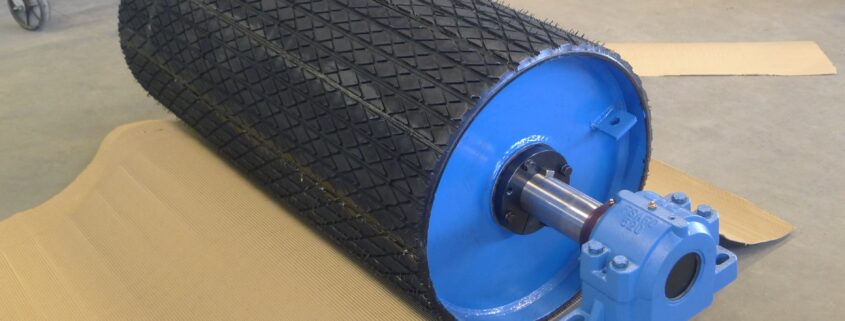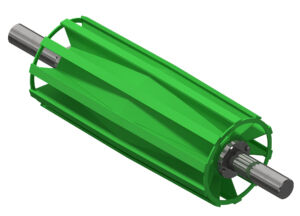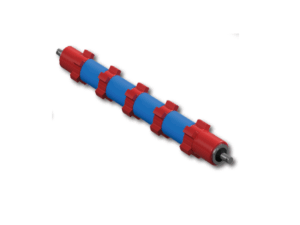The diverse range of products and specifications for pulley lagging reflects the unique applications of businesses all over the world. With endless options to choose from, how do you know which system ensures efficiency and longevity for your specific use? This article tells you what you need to know about the different types of pulley lagging and factors to consider when choosing a product.

Different Types of Pulley Lagging
First, let’s start with what conveyor pulley lagging or drum lagging is. Simply put, it is wrapped around drum pulleys to increase friction with the conveyor belt while protecting the shell from damage. While there are several types of drum lagging, we’ll focus on rubber and ceramic lagging below.
- Rubber lagging is the most common type of pulley lagging, that includes plain rubber lagging and grooved rubber lagging (including diamond, herringbone, and chevron grooves). Rubber is a versatile material that can be customized in thickness, hardness, and type of grooves.
- Ceramic lagging is ideal for harsh environments where durable material and long service life are required. It is available with a dimple or smooth ceramic tiles and with various coverage.
Choosing the Right Type of Pulley Lagging
Conveyor manufacturers consider the following factors when designing a system:
- Belt type and running speed – The belt’s run speed has a significant impact on the lagging. However, the belt should always take priority as they are more costly to replace. When choosing a pulley lagging, consider how speed will wear out the lagging and affect the operating temperature.
- Pulley type – You can choose two different types of lagging for drive pulleys and tail pulleys even if they are on the same conveyor because they have different responsibilities. More grip is required for a head pulley lagging compared to a tail pulley.
- The environment and operating conditions – The climate, wet or dry conditions, and chemical contact all play a role in the type of pulley lagging to choose. Conveyor manufacturers like Luff Industries can recommend the right kind of pulley lagging ideal for your operating conditions.
- The type of material being processed – Product abrasion is an essential factor to consider. The abrasiveness of the material on the belt impacts belting requirements, which affects the type of pulley lagging to use.
Final thoughts
When building a conveyor system, the belt and pulley should all run smoothly. A conveyor system aims to transport material as efficiently as possible while minimizing wear on the system’s components. Conveyor manufacturers can design and engineer a system tailored to specific applications and type of material being transported.




